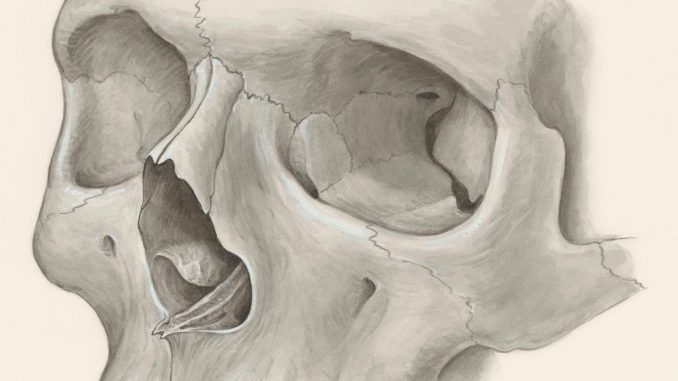
By Samin Vafaee
From “CSI” to murder podcasts, stories of true crime are on the rise in popularity. But before these cases turn into Netflix documentaries, an immense amount of forensic work goes into identifying the victims. This analysis of human remains is exactly what made Chico State’s Forensic Anthropology department recognized as one of the top experts in identification by the FBI.
Currently, the department consists of five members and works with 156 agencies across eight states to help identify human remains from all scenarios. This includes collaborating with law enforcement, medical examiners and lawyers in order to establish a biological profile and analyze bodily trauma. When the university’s lab receives human remains, it’s because the body has reached a point of decomposition where the coroner or medical examiner cannot decipher an identification.
“What we’ll do for identification is take a bunch of measurements and bornological assessments and we’ll estimate the age, sex, ancestry, and stature of the individual,” said Dr. Colleen Millgan, one of the lab’s co-directors.
They also use a technology known as warm water maceration, which involves soaking the skeleton and removing tissue further. They can then create a biological profile that’s cross-examined with missing persons reports in order to come to an accurate identification.
Dr. Eric Bartelink, another co-director of the lab, also touched on post-mortem factors that can affect the state of the skeleton including carnivores scavenging and extreme weather conditions.
“We also have to distinguish any post-mortem changes with trauma such as being shot or stabbed,” Bartelink noted. “We need to be able to differentiate them from post-mortem things that happen after death.”
Although the lab cannot establish a cause of death, a medical doctor can use the information from their reports to make a more accurate conclusion.
One of the areas the department is unique in identification work is their use and reliance on stable isotopes. The phrase “you are what you eat” rings true, in that stable isotopes come from the food a person eats which then gets incorporated into tissue, bones, teeth, nails, and hair. The lab is able to analyze those from a body and then report on what foods were eaten, which can sometimes geolocate a specific part of the world the person could have come from.
“We can look at isotopic signatures and say one person was from Latin America because of the amount of corn in their diet and we can see that with carbon isotopes,” said Bartelink. “Other isotopes like oxygen, they tell you where a person would have gotten their drinking water from so we can track down where they were born or grew up.”
This technology was also used in the military dating back to WWII when trying to identify which remains are soldiers versus remains of local individuals. More recently, the lab plays a big role in helping identify undocumented border crossing deaths along the U.S. Mexican border.
Outside of the lab work the department does, it also offers graduate programs with extensively interactive training. This is exactly what intrigued Arielle Sperber, a current graduate student in the program studying Biological Anthropology, to apply.
“The reason I chose Chico State was the opportunity to do all the hands-on work that we get to do here,” Sperber explained. “My undergraduate education was very theory heavy and I didn’t have a forensic anthropology professor to learn from. I realized the gap in my education was in methodological training and this is kind of the place you go for that.”
The department gets an enormous amount of case work from the state and is very open to students being involved, whether that’s in the lab or going out on recoveries. For Sperber, the end goal remains the same. She came into the program wanting to pursue disaster victim identification work and mass casualty response, and through her education journey at Chico State, that dream is coming true.
Although this casework can be difficult from various angles, the driving force that keeps both the doctors and the students going is the closure it can bring families in a time of tragedy. The lab was recently able to assist with an identification of a victim through forensic genetic genealogy dating back to 30 years ago.
“They might not know who we are, or what we did, but we know that they probably appreciate the fact that they have some answers,” Bartelink reflected.
Sperber, who will continue her education after Chico State and pursue a PhD, also started her journey in forensic anthropology by working at the Fowler Museum at UCLA under the Native American Graves Protection and Repatriation Act. Her work consisted of helping returning ancestors to tribes and seeing how important it was to their community.
“Getting people ID-ed, getting them home, it’s really been at the core of my work,” said Sperber. “It feels like the most tangible thing we can do with anthropology. Obviously, we can’t bring them back, but we can bring them home.”
The Chico State Forensic Anthropology Department is in the process of expanding and looking forward to a new identification lab and training center in 2027.

Be the first to comment